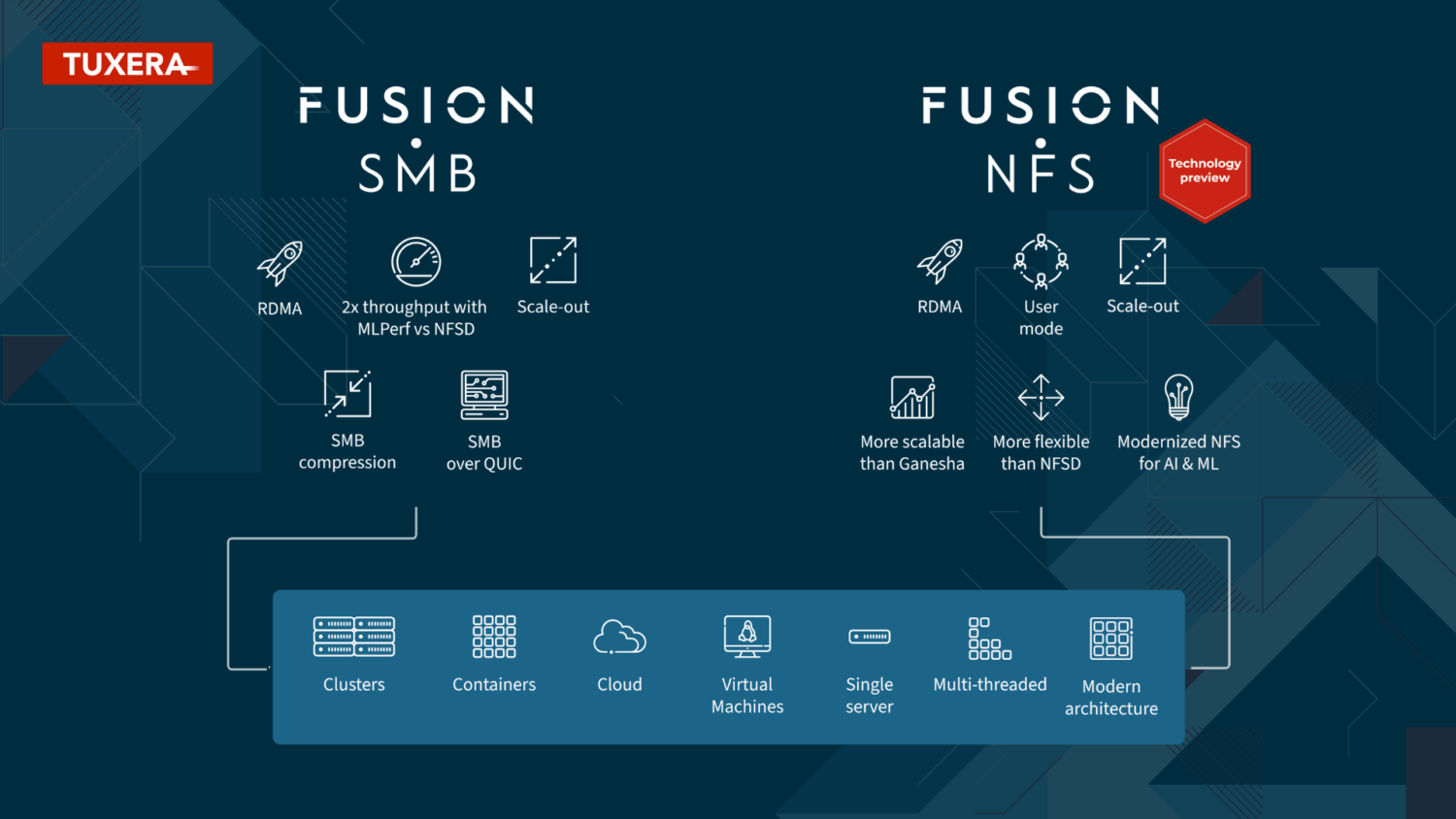Tuxera, a global leader in commercial-grade file systems and storage solutions, is demonstrating enterprise-grade file sharing for Linux servers at SC25, The International Conference for High Performance Computing, Networking, Storage, and Analysis. Engineered specifically for HPC, AI and ML workloads, Tuxera Fusion technology delivers breakthrough performance across clusters, containers, cloud, virtual machines, and single server deployments through its multi-threaded, modern architecture.
The Tuxera Fusion platform addresses the critical performance bottlenecks that limit productivity in data-intensive computing environments. With proven 2x throughput improvements using MLPerf benchmarks versus NFSD, Fusion SMB delivers exceptional performance advantages whilst providing superior cross-platform compatibility. Unlike NFS, which has limited support across different operating systems, SMB’s universal protocol support ensures seamless connectivity across Windows, macOS, and Linux environments. This means HPC and AI/ML teams can standardize on a single, high-performance protocol without compromising throughput, even in predominantly Linux-to-Linux workflows that represent 99% of AI/ML workloads. The result is both the best possible performance and the greatest deployment flexibility, enabling research teams to maximize their computational investments whilst maintaining the reliability and compatibility that mission-critical applications demand.
Fusion SMB delivers exceptional performance improvements with advanced features including RDMA support for ultra-low latency access, seamless scale-out capabilities for growing datasets, SMB compression to optimise network utilisation, and SMB over QUIC for secure, high-performance connectivity. These capabilities enable research teams to work directly with the most demanding datasets without traditional performance compromises.
At SC25, Tuxera is providing a technology preview of Fusion NFS, demonstrating how modern engineering can advance the established NFS protocol. Running in user mode for simplified deployment and management, Fusion NFS offers RDMA support, scale-out architecture, and performance modernized for AI whilst providing greater flexibility than traditional NFSD implementations. Built for resilience, Fusion NFS maintains protocol compatibility whilst delivering the performance characteristics that modern research environments demand.
The Tuxera Fusion platform’s modern, multi-threaded architecture supports diverse deployment models essential for contemporary HPC environments. Whether running on single servers, scaling across clusters, operating in containerized environments, or deployed in cloud infrastructure, Fusion delivers consistent performance and reliability. This flexibility enables research institutions to standardize on proven technology whilst adapting to evolving computational requirements.
Data In Science Technologies, Inc., a leading IBM partner specializing in high-performance computing solutions, will feature Tuxera Fusion SMB at booth 2902, demonstrating real-world implementations of the technology within IBM Storage Scale environments. This collaboration highlights how enterprise partnerships enable research institutions to achieve breakthrough performance in data-intensive scientific computing applications.
“We’re demonstrating the best of all worlds – proven protocol compatibility combined with performance that matches the scale and demands of today’s AI and HPC workloads,” said Duncan Beattie, Market Development Manager at Tuxera. “Whether teams need the advanced features of Fusion SMB or the familiar NFS protocol enhanced with modern capabilities, our technology enables researchers to focus on their work rather than infrastructure limitations.”
Tuxera Fusion technology is already accelerating diverse workloads including medical research and imaging analysis, AI model training and inference, climate and weather modelling, computational fluid dynamics, and genomics and bioinformatics applications. The platform’s enterprise-grade reliability ensures that mission-critical research can proceed without the interruptions and inefficiencies that traditional storage bottlenecks create.






